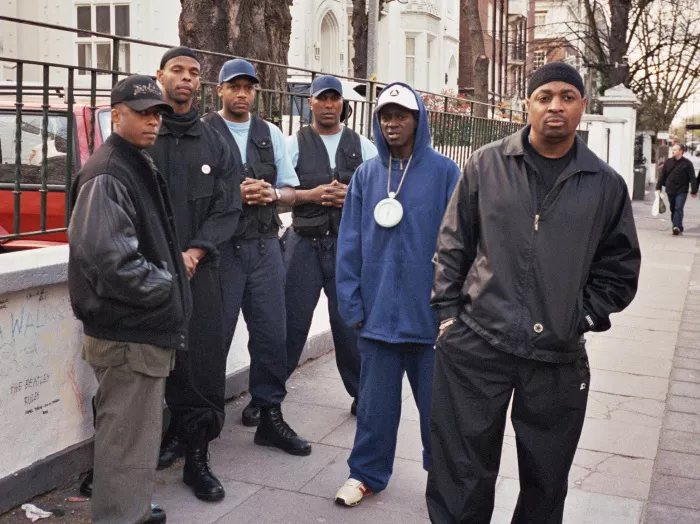Hip-hop music, since its inception in the 1970s, has evolved into a global phenomenon. Central to this genre is its rhythmic complexity and innovative use of beats. While many elements contribute to the unique sound of hip-hop, the role of rhythm, particularly the stress on upbeats, is fundamental. This article delves into the rhythm elements in hip-hop music, exploring how upbeats are emphasized and the significance of this technique in the overall structure and feel of the genre.
1. The Basics of Rhythm in Hip-Hop
Understanding Rhythm and Beats
Rhythm in music is the pattern of sounds and silences. It involves the timing of notes and beats within a measure, which is a segment of time defined by a given number of beats. A measure (or bar) in hip-hop typically consists of four beats, aligning with the common time signature of 4/4.
Downbeats and Upbeats
In any given measure, beats can be classified as downbeats and upbeats. Downbeats are the strong beats that often align with the bass drum and mark the start of a measure. Upbeats, on the other hand, are the weaker beats that occur between the downbeats. In a 4/4 measure, downbeats fall on beats 1 and 3, while upbeats fall on beats 2 and 4.
2. The Role of Syncopation
What is Syncopation?
Syncopation is the displacement of the regular metrical accent in music, which places emphasis on beats or parts of beats that are typically unaccented. In hip-hop, syncopation is a key rhythmic technique, creating a sense of groove and forward momentum by stressing the upbeats or off-beats.
Syncopation in Hip-Hop
Hip-hop often uses syncopated rhythms to create a complex and engaging sound. This involves emphasizing the upbeats, which can be achieved through various rhythmic elements such as drum patterns, hi-hats, and other percussive instruments.
3. The Drum Machine and its Influence
The Advent of the Drum Machine
The drum machine, especially the Roland TR-808, played a crucial role in shaping hip-hop’s rhythmic foundation. These machines allowed producers to craft intricate and precise beat patterns, incorporating syncopation and upbeat stresses with ease.
Programming Upbeats
Producers can program drum machines to emphasize upbeats by placing snares, hi-hats, or other percussive sounds on these beats. For instance, placing a snare hit on the second and fourth beats of a measure can create a backbeat, a common element in hip-hop that highlights the upbeats.
4. The Role of the Hi-Hat
Hi-Hats and Upbeats
The hi-hat cymbal is a staple in hip-hop percussion, often used to accentuate the upbeats. Producers might use closed hi-hats to create a tight, crisp sound on the off-beats or open hi-hats to add a more pronounced accent.
Hi-Hat Patterns
Hi-hat patterns in hip-hop can vary widely, but a common technique is to play the hi-hats on the “and” counts (e.g., 1-and, 2-and, etc.). This placement naturally stresses the upbeats, contributing to the syncopated feel of the music.
5. The Influence of Funk and Jazz
Funk’s Contribution
Hip-hop borrows heavily from funk music, which is known for its syncopated rhythms and emphasis on upbeats. Funk drummers like Clyde Stubblefield and Jabo Starks of James Brown’s band created iconic grooves that influenced early hip-hop producers.
Jazz and Complex Rhythms
Jazz, with its complex rhythms and improvisational nature, also plays a role in hip-hop’s rhythmic structure. Jazz musicians often emphasize off-beats and upbeats, a technique that has been adopted and adapted in hip-hop production.
6. The Backbeat and Its Importance
What is the Backbeat?
The backbeat is a rhythmic pattern where the second and fourth beats of a measure are accented. In hip-hop, this usually involves placing a snare drum hit on these beats, creating a strong emphasis on the upbeats.
Creating Groove with the Backbeat
The backbeat is essential in hip-hop for creating groove and danceability. By stressing the second and fourth beats, the music gains a driving, propulsive quality that encourages movement and engagement.
7. Sampling and Its Impact
Sampling Techniques
Sampling, the practice of reusing portions of other recordings, is a cornerstone of hip-hop production. Producers often sample drum breaks, funk grooves, and jazz rhythms that emphasize upbeats, integrating these elements into their tracks.
Iconic Samples
Many iconic hip-hop tracks feature samples that stress upbeats. For instance, the breakbeat in The Winstons’ “Amen Brother,” widely known as the “Amen break,” is heavily syncopated and has been used in countless hip-hop tracks.
8. Modern Hip-Hop and Upbeat Stress
Trap Music
Trap music, a subgenre of hip-hop, has a distinct rhythmic style that often emphasizes upbeats. The rapid hi-hat rolls and syncopated snare patterns in trap beats create a complex, upbeat-driven rhythm.
Contemporary Producers
Modern hip-hop producers continue to innovate with rhythm, using digital tools to manipulate and stress upbeats in creative ways. Artists like Kendrick Lamar and producers like Metro Boomin and Mike Will Made-It exemplify the use of intricate rhythms and upbeat accents in their music.
See Also: What Music Style is Hip Hop Based On?
Conclusion
The rhythm element that stresses the upbeats in a measure is a fundamental aspect of hip-hop music. Through the use of syncopation, drum machines, hi-hats, and influences from funk and jazz, hip-hop producers create dynamic and engaging rhythms. The emphasis on upbeats contributes to the genre’s unique groove and energy, making it a driving force in contemporary music. Understanding and appreciating these rhythmic techniques allows for a deeper appreciation of the artistry and innovation that define hip-hop.

